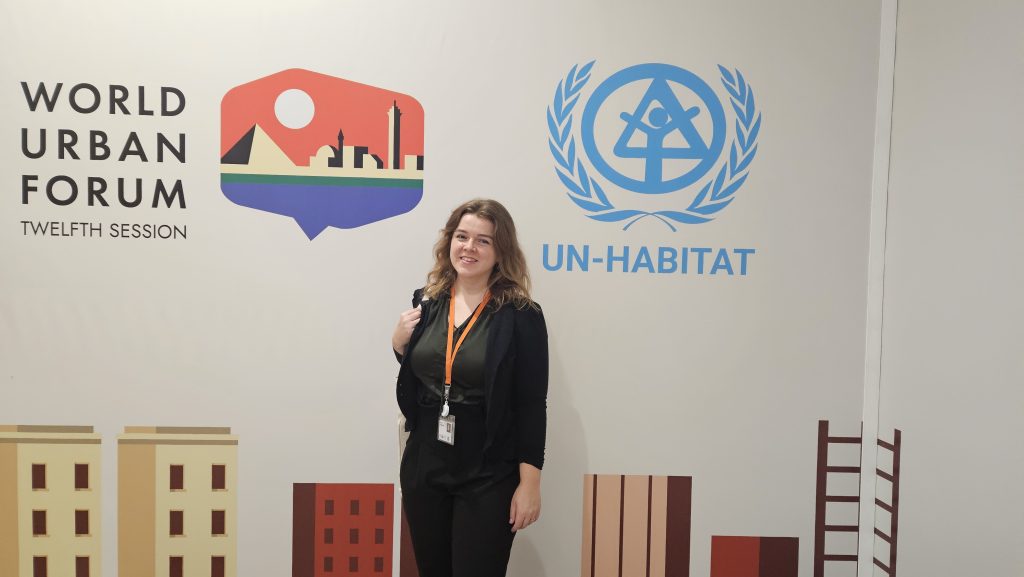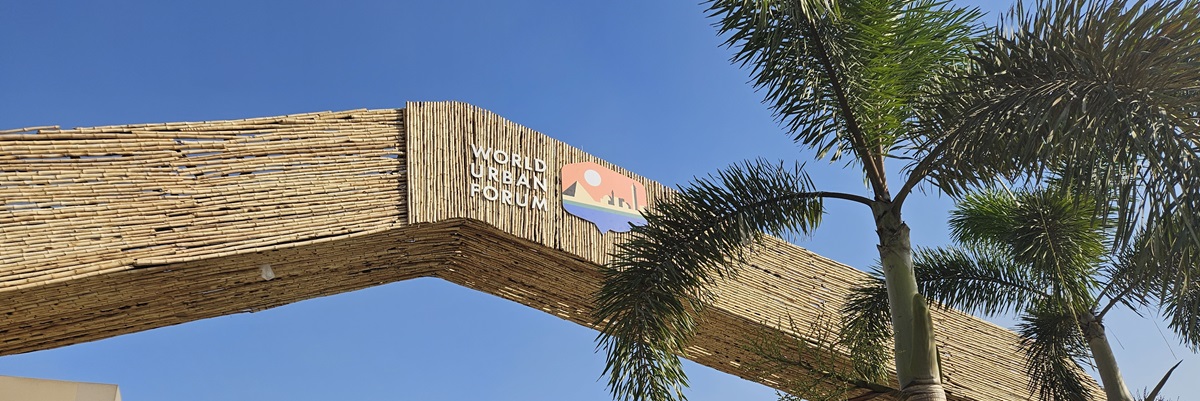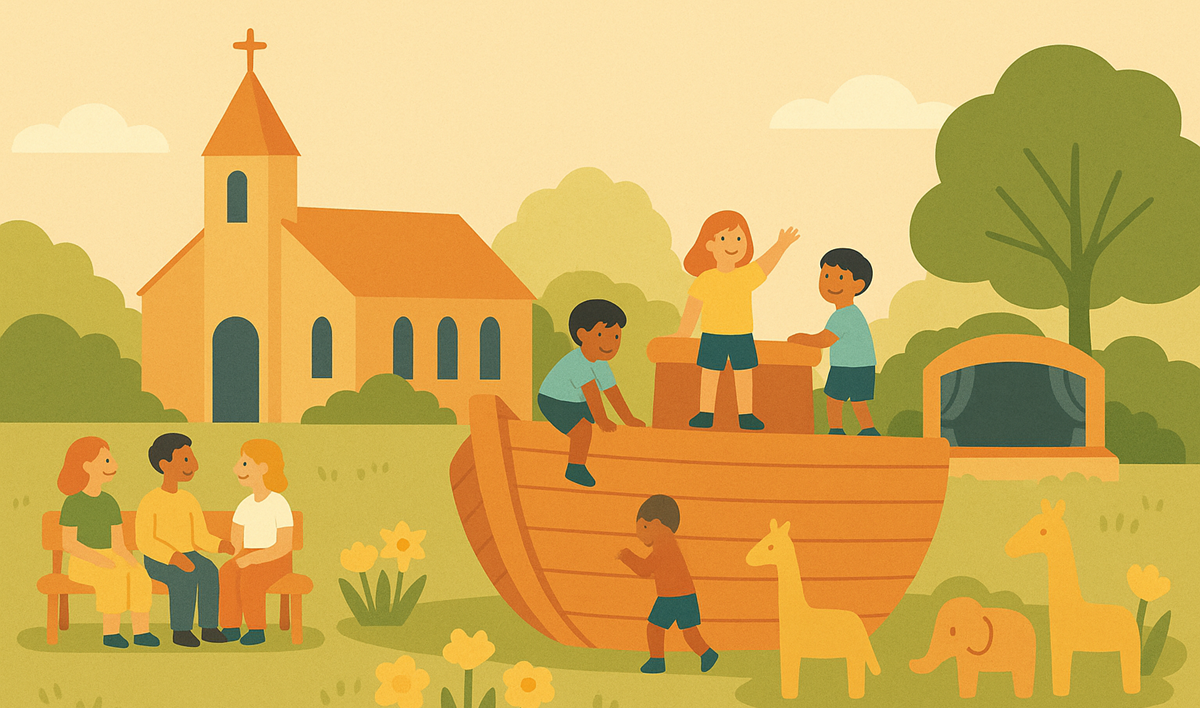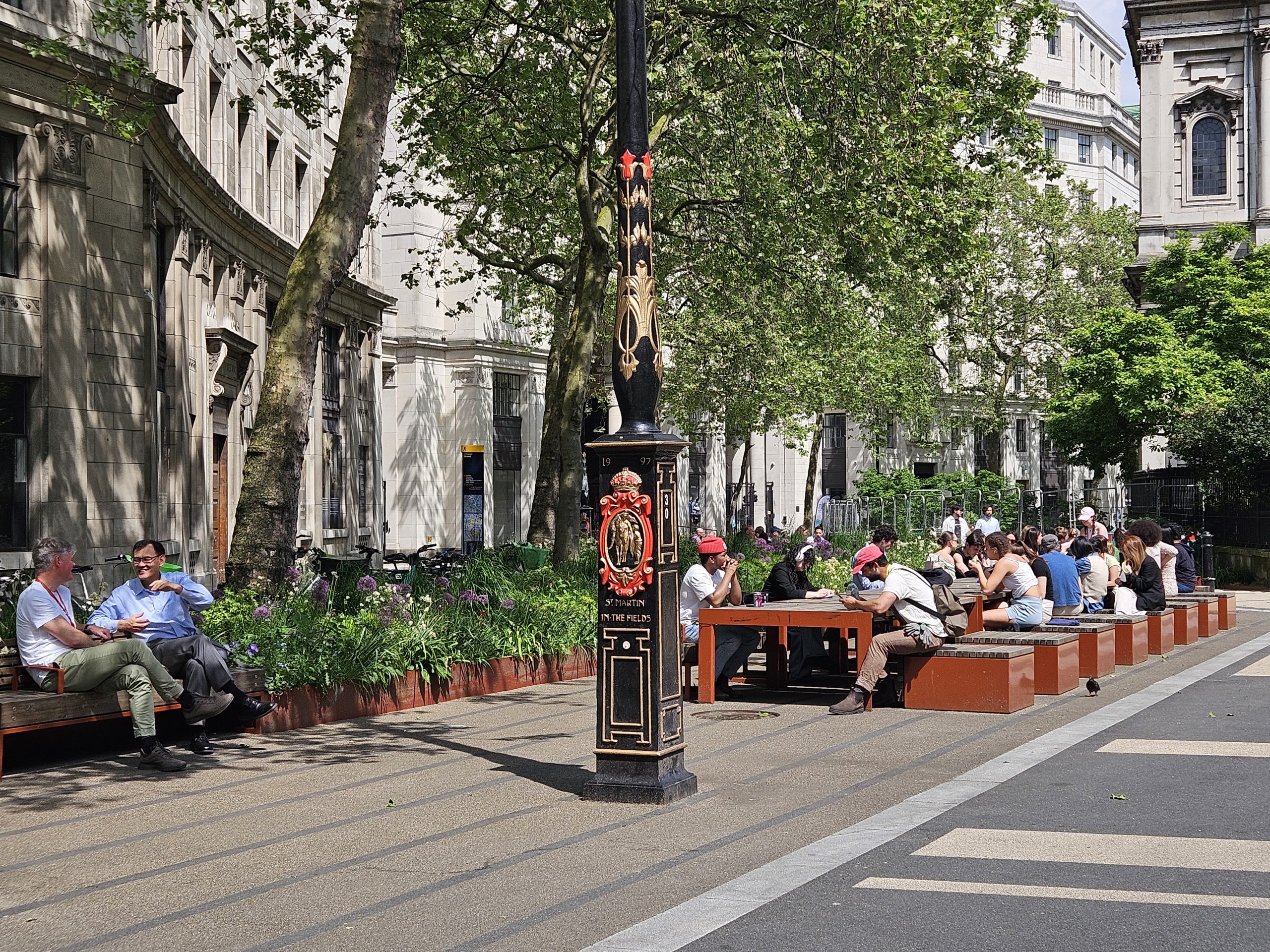Every two years, UN Habitat organises the World Urban Forum, the world’s largest gathering of urban planning experts. The idea is to follow up on progress around Sustainable Development Goal 11 and the New Urban Agenda, while also learning from each other. This year, the conference took place in Cairo from November 4-8. Read on for my impressions of the Egyptian capital and a surprising trip on the Nile!
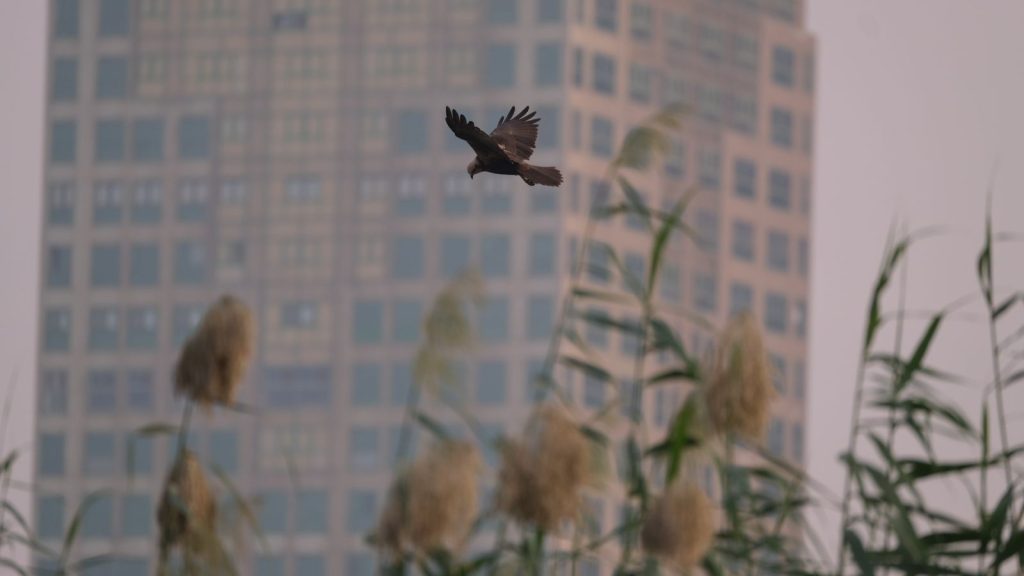
The struggle for green spaces
“There’s a purple swamphen!”, Farah, my bird watching guide, points out excitedly. It is 6 am in Cairo and I am on a tour that I did not expect when I signed up for ten days in the Egyptian capital to attend the 12th World Urban Forum and learn more about this megacity. While the conference with its Cairo Call for Action and the World Cities Report 2024 provided many important insights, it was the host city that drew my attention the most.
Cairo struggles with air pollution, water stress, traffic congestion, housing scarcity, and more. Around 23 million people live in the Egyptian capital. It was never a green city due to its location, but Cairo has had many iterations as a reasonably walkable city with access to its lifeline, the Nile, and beautiful trees, most of them planted in the 19th century when planners tried to create a Paris by the Nile.
Thinking that I would need to see the Nile to understand the city a bit better, I tried several times to access it, but traffic, non-existing sidewalks, and construction sites stopped me. With “Mamsha Ahl Misr”, the People’s Walkway, there is a pleasant promenade, but it is not free to access and does not add to biodiversity at all – it doesn’t even offer a lot of shade. Only a certain group of Cairenes has this access to the river.
Instead, I opt for a birdwatching tour with Dayma, a social enterprise for environmental education that aims at bringing nature closer to the Cairenes. There are still some valuable wetlands and ecosystems on the Nile in the heart of Cairo, mostly centred around some green islands in the river. We see over 20 different bird species in just 2 hours and I leave with the hope that more people can experience the Nile and its marvels up close.

“Green” developments
Of course, a megacity like Cairo has problems that might be more pressing than investing in green and blue spaces – first of all the intense struggle for land in a city that houses at least 23 million people. Its president has promised to deliver large infrastructure projects for housing and transport, which are taking their toll in the city: Cairenes, the people of Cairo, have less than 1 square metre of green space each – the WHO recommends 9 square metres per person, and cities like London boast up to 95 square metres. Mexico City offers 28 and Dubai 6.
More and more of the already rare green, public spaces are demolished, taken down either for construction, closed “for their own protection”, or undergoing commercial development. During the World Urban Forum, one of the excursions shows us to the Fustat Development, a large site in the heart of Old Cairo that will mostly house tourists – and will come at a steep entrance price from a local’s point of view.

We also see where the slum dwellers that used to live in Fustat, many of them artisans supplying the Khan al-Khalili bazaar, were rehoused after their homes were demolished. The Al-Asmarat social housing project is one of the pilot projects in the city. According to my tour guide, an Egyptologist, who brings me to the pyramids a few days later, Al-Asmarat is not a safe place to be. Rehousing many different communities has led to conflicts – but this is not something you should say out loud. Meanwhile, officials proudly lift the plastic sheet that covers the thin stretch of fake, bright green grass to show us a new public space in Al-Asmarat.
The story in the New Administrative Capital is similar. Here, in the East of Cairo, a whole new city is mushrooming out of the desert. Designed for as many as 8 million people, it seems to be another iteration of one of the many mega projects prevalent in countries like the United Arab Emirates or Saudi Arabia, if less smart. Construction rates are astonishing, and soon, people might move in. Already, all of Egypt’s 34 ministries have their seats there – but travelling takes time. And the one monorail designed to provide some public transport is not ready yet (nor do its stations, which end at streets with 12 lanes, allow for entry or exit). The “Green River” park, which will also be ticketed, needs every drop of water it can get in the harsh desert climate, putting the term “sustainable” into question.

The potential of nature-based solutions
“The smells of trees and grass is an amazing experience”, “an air of calm in the midst of a hot and crowded Cairo” – reviews of the large Al-Azhar Park show that Cairenes are craving some respite from the heat and the concrete of their city. The few parks in the city are well-frequented. Those who can afford to often move out to the suburbs where they can have a garden.
At the conference, the “Green City” programme in Egypt received a lot of attention, even though most of it seems to be about infrastructure rather than green spaces. However, local initiatives, often organising via Facebook, are working on planting and re-planting trees, providing shade and fruit to their neighbourhoods. Other dig deeper and save the city’s incredible heritage by draining damaging groundwater and using it for urban farming and the irrigation of parks. There are even an increasing number of rooftop farms in the city.
Despite these developments, the potential of green space is limited in a dry, hot city like Cairo. But the Nile also offers itself as source for blue spaces that, if used well, can cool down the city, provide recreation, and be important ecosystems. During my early-morning birding tour, I see beautiful parts of the city with an astonishing variety of birds, from white, great and farm egrets to herons, reed warblers, kingfishers of all colours, moorhens, kestrels and march harriers. The atmosphere is peaceful, the silvery water of the river beautiful and the silhouette of the city stunning. “The sense of nature-connectedness in Cairo is still growing”, Farah explains. “With Dayma, we are aiming to sensitise people to nature.” She is also questioning the prevailing idea that nature always has to be green by taking people to blue spaces, to the desert, and to protected areas like the Wadi Degla Canyon around the city.

Room for political influence in Egypt can be small, which often results in a sense of hopelessness or powerlessness. While the Environmental Law forbids the cutting-down of trees, it is not enforced very well and residents who are grieving the loss of trees in their streets have nowhere to turn. “We want to make people understand what they stand to lose, but also gain with nature in the city”, Farah says. Dayma’s educational tours and work with schools aims at empowering people to find ways to have an impact, small step by small step. “We at Dayma are passionate about biomimicry, it drives us”, she explains, referring to nature’s wisdom in design and innovation. She is an advocate of nature-based solutions in cities, which have the understanding of ecosystems at their foundation. “Do you see that kingfisher entering the water to hunt? His head and beak are perfectly formed to create minimal disturbance. This shape is one of the inspirations for Japan’s bullet train designs” she says, demonstrating the potential of nature’s solutions.
Cairo at a crossroads: Dubai vs. Paris
It is not rare anymore for summer temperatures in Cairo to surpass 40 degrees in summer. At the same time, around 16 per cent of annual premature deaths in Cairo come from air pollution. The loss of shade and cooler surfaces is leading to hotter streets and increasing the urban heat island effect. It also causes new challenges, such as losing green islands that used to help residents cross streets, less walkability, and less inclusivity due to the commercialisation of parks.
When it rains on my first day in the Egyptian capital, panic breaks out and storekeepers use brooms in a desperate attempt to keep out the water. This little glimpse into the effect of rainfalls that are set to occur more often already demonstrates the importance of having some green and blue spaces that can absorb water, while also curbing the urban heat island effect.
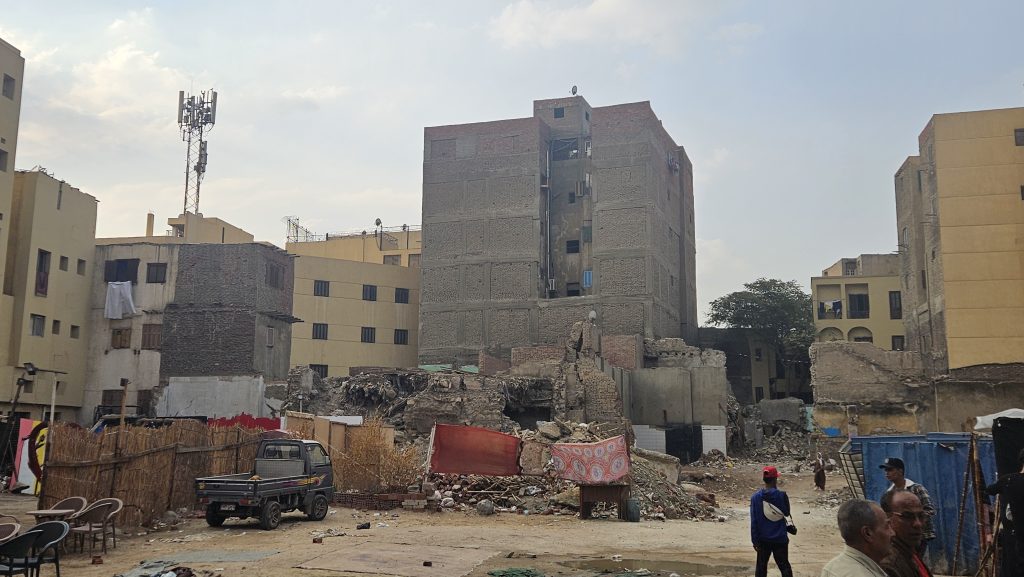
It appears that Cairo is striving to be more like Dubai rather than like Paris, as it used to be. While of course the city should find and protect its own identity, now is also the time to reconsider some values. Not all of the suggestions in SDG11 might apply to a city that has to deal with as many pressures as Cairo, but defining public space as an important common good that has social and environmental benefits, rather than perceiving them as a drain on resources, would be a very good first step.
The thousands of urban planners, architects, students and other planning experts gathered at the Exhibition Centre for five days were not impressed with the over 300 km of new streets, large bridges, and gigantic housing developments in the desert for yet-to-be-found inhabitants. Rather than dismissing the great ideas presented at a WUF that finally focused on concrete action and showcased amazing examples of sustainable urban development from all over the world as “not applicable to Cairo”, the government would do well to take a closer look at the Cairo Call to Action, as well as to its innovative and passionate citizen initiatives. The koots quacking in the Nile during my birdwatching tour would agree: Cairo could do so well. It is up to its leaders now to listen to citizens and find a more sustainable growth path.
In more encouraging news, I’m happy to report that WUF12 focused very much on getting things done, showcasing an incredible amount of inspiring urban projects from all over the world. Finally, there was a sense of progress. Next stop: WUF13 in Baku, May 2026!
